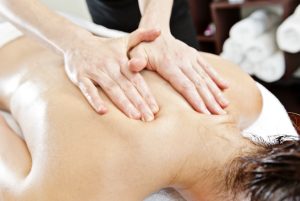 In massage therapy school, you will learn about different types (modalities) of massage. And as you excitedly share all your newfound knowledge with friends and family, you’ll probably realize that the modality they are most familiar with is Swedish—it is the most well-known massage modality among those not in the profession.
In massage therapy school, you will learn about different types (modalities) of massage. And as you excitedly share all your newfound knowledge with friends and family, you’ll probably realize that the modality they are most familiar with is Swedish—it is the most well-known massage modality among those not in the profession.
At ASIS Massage Education you will learn the Swedish massage technique of applying light pressure on the muscles and connective tissues of the body using long strokes, circular pressure, kneading, tapping, bending, and stretching.
6 Strokes of Swedish Massage:
Effleurage: from the French, meaning “to skim” or “touch lightly,” consists of smooth strokes
Petrissage: from the French, meaning “to knead,” consists of squeezing, rolling, or kneading strokes
Friction: the use of deep, circular movements in which the therapist’s hands rub against the client’s body
Tapotement: a rhythmic percussion, most frequently administered with the edge of the hand, a cupped hand, or the tips of the fingers
Vibration: the shaking or jostling of specific muscles or muscle groups
Palpation: the act of sensing through touch
Although it can be said that massage therapy clients who seek Swedish massage treatments are primarily interested in relaxation, Swedish massage can also improve circulation, help the body to release toxins, and improve range of motion, and some clients will seek Swedish massage for relief from muscular aches and pains.
Studies, such as this one in the New York Times , show that Swedish massage also reduces the stress hormone cortisol and increases levels of white blood cells, the cells which help our bodies fight infections and disease.
To learn more about the modalities we teach at ASIS Massage Education, check out our course descriptions page or give us a call at 1-866-334-3348.